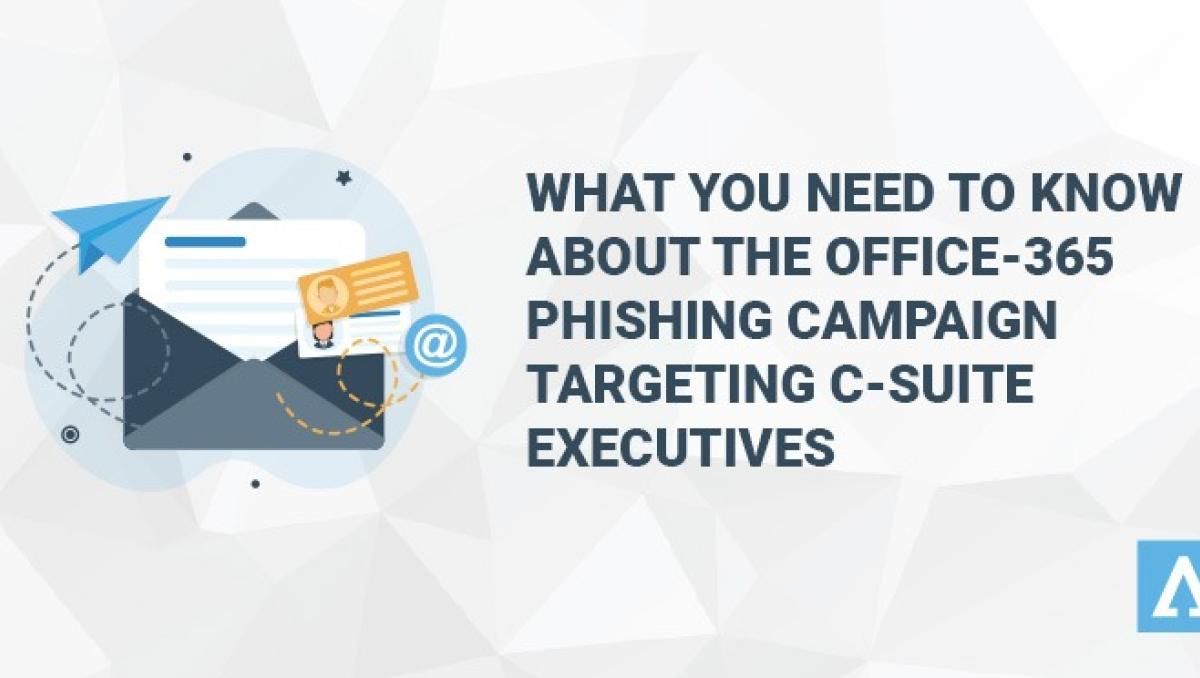Cybercriminal Makes Millions Targeting Executive Office365 Accounts

Table of Contents
The Methods Used by the Cybercriminal
The success of this cybercriminal highlights the evolution of cyber threats beyond simple phishing attempts. They employed a multi-pronged approach, exploiting vulnerabilities in both technology and human behavior.
Sophisticated Phishing Attacks
This cybercriminal didn't rely on generic phishing emails. Instead, they employed highly sophisticated techniques:
- Spear Phishing: Emails were meticulously crafted to target specific executives, using personalized information gleaned from public sources to build trust and bypass spam filters.
- CEO Fraud (Whaling): These attacks impersonated high-level executives to trick employees into transferring funds or revealing sensitive information. The emails mimicked the communication style and vocabulary of the targeted executive.
- Realistic Email Templates: The cybercriminal used sophisticated techniques to replicate legitimate email templates, including logos, branding, and even email signatures, making the phishing emails nearly indistinguishable from genuine communications.
- Social Engineering: Beyond technical prowess, the attacks relied heavily on social engineering principles, exploiting psychological vulnerabilities to manipulate individuals into taking actions they wouldn't normally consider. This often involved creating a sense of urgency or fear to pressure victims into quick responses.
Exploiting Weak Passwords and Security Gaps
The success of these attacks was also predicated on exploiting common security weaknesses:
-
Weak Passwords: Many organizations still suffer from weak password policies, allowing easily guessable or crackable passwords to compromise accounts.
-
Lack of Multi-Factor Authentication (MFA): The absence of MFA significantly reduced the barrier to entry for attackers. MFA adds an extra layer of security, requiring a second form of verification beyond a password.
-
Unpatched Software: Outdated software with known vulnerabilities provided easy entry points for the cybercriminal to gain unauthorized access. Regular patching is crucial to mitigating these risks.
-
Statistics on Password Breaches: Reports indicate that a significant percentage of data breaches are linked to weak or stolen passwords, underlining the importance of robust password management.
Ransomware Deployment
Once access was gained, ransomware was deployed, encrypting critical data and systems. This resulted in significant disruptions and substantial financial losses.
- Types of Ransomware Used: The specific ransomware used isn't publicly available, but the impact suggests highly sophisticated encryption techniques.
- Methods of Data Encryption: Advanced encryption methods rendered data inaccessible without the decryption key held by the cybercriminal.
- Impact on Business Continuity: The disruption caused by ransomware attacks can cripple business operations, resulting in lost revenue and productivity.
- Ransom Demands: The high ransom demands reflect the value of the data held hostage and the pressure on organizations to pay to restore operations quickly.
The Financial Impact of the Cybercriminal's Activities
The financial repercussions of this cybercriminal's actions are staggering.
Millions in Ransom Payments
The cybercriminal allegedly received millions in ransom payments, highlighting the significant cost businesses are willing to pay to recover critical data.
- Examples of Ransom Amounts: While exact figures are often kept confidential, reports suggest ransom demands ranging from hundreds of thousands to millions of dollars.
- Costs Associated with Data Recovery: Even after paying the ransom, organizations face significant costs associated with data recovery, system restoration, and forensic investigations.
- The Long-Term Financial Effects: The long-term financial effects can include decreased investor confidence, legal fees, and reputational damage.
Loss of Intellectual Property and Sensitive Data
Beyond the ransom payments, the theft of intellectual property and sensitive data caused irreparable damage.
- Examples of Sensitive Data Compromised: This could include strategic plans, financial data, customer information, and confidential communications.
- The Cost of Reputational Damage: Data breaches can severely damage an organization's reputation, leading to loss of customer trust and business opportunities.
- The Legal and Regulatory Ramifications: Organizations can face significant legal and regulatory penalties for failing to adequately protect sensitive data, particularly under regulations like GDPR.
Protecting Your Executive Office365 Accounts
Protecting your organization from similar attacks requires a multi-layered approach focusing on proactive security measures and robust incident response planning.
Implementing Strong Security Measures
Strengthening your defenses is paramount:
- Multi-Factor Authentication (MFA): Implement MFA for all executive accounts and ideally for all users. This adds a significant layer of security, making it much harder for attackers to gain access even if passwords are compromised.
- Strong Password Policies: Enforce strong password policies, requiring complex passwords that are regularly changed and never reused across multiple platforms. Consider using a password manager to simplify this process.
- Regular Security Awareness Training: Invest in regular security awareness training for all employees, particularly those handling sensitive data. This training should focus on identifying and avoiding phishing attacks and practicing good cybersecurity hygiene.
- Employee Education: Regularly educate employees about the risks of clicking on suspicious links, downloading attachments from unknown sources, and sharing sensitive information.
- Security Information and Event Management (SIEM) Systems: Invest in SIEM systems to monitor security events and detect potential threats in real time. These systems provide valuable insights into potential vulnerabilities and suspicious activities.
Monitoring and Detection
Early detection and rapid response are critical in minimizing the impact of a cyberattack:
-
Real-time Threat Monitoring: Implement tools to monitor network traffic and user activity for suspicious behavior. This includes intrusion detection and prevention systems.
-
Intrusion Detection Systems: Deploy intrusion detection systems to identify and alert you to unauthorized access attempts.
-
Incident Response Planning: Develop and regularly test an incident response plan to guide your actions in the event of a security breach. This plan should outline clear procedures for containment, eradication, recovery, and post-incident activities.
-
Examples of Security Monitoring Tools: Many reputable security vendors offer comprehensive monitoring and detection solutions tailored to the needs of various organizations.
Conclusion:
The case of the cybercriminal targeting executive Office365 accounts demonstrates the devastating financial and reputational consequences of inadequate cybersecurity measures. The methods employed highlight the need for a proactive approach that combines technical solutions with robust employee training and awareness. By implementing strong security measures, including MFA, robust password policies, regular security awareness training, and real-time threat monitoring, organizations can significantly reduce their vulnerability to these sophisticated attacks. Don't become the next victim of an Office365 executive account breach. Secure your Office365 accounts today! Seek professional cybersecurity assistance to assess your vulnerabilities and implement a comprehensive security strategy. Protecting your executive accounts is not just about technology; it's about building a culture of cybersecurity awareness and resilience.

Featured Posts
-
 Buy Ariana Grande Lovenote Fragrance Set Online A Comprehensive Guide To Pricing
Apr 27, 2025
Buy Ariana Grande Lovenote Fragrance Set Online A Comprehensive Guide To Pricing
Apr 27, 2025 -
 Assessing The Weakness In Private Credit Before Recent Events Credit Weekly
Apr 27, 2025
Assessing The Weakness In Private Credit Before Recent Events Credit Weekly
Apr 27, 2025 -
 Offenlegung Gemaess Artikel 40 Absatz 1 Wp Hg Pne Ag Meldet Ergebnisse
Apr 27, 2025
Offenlegung Gemaess Artikel 40 Absatz 1 Wp Hg Pne Ag Meldet Ergebnisse
Apr 27, 2025 -
 Wta 1000 Dubai Analisis De Las Eliminaciones De Paolini Y Pegula
Apr 27, 2025
Wta 1000 Dubai Analisis De Las Eliminaciones De Paolini Y Pegula
Apr 27, 2025 -
 Finanzbericht Pne Ag Veroeffentlichung Nach Artikel 40 Absatz 1 Wp Hg
Apr 27, 2025
Finanzbericht Pne Ag Veroeffentlichung Nach Artikel 40 Absatz 1 Wp Hg
Apr 27, 2025
